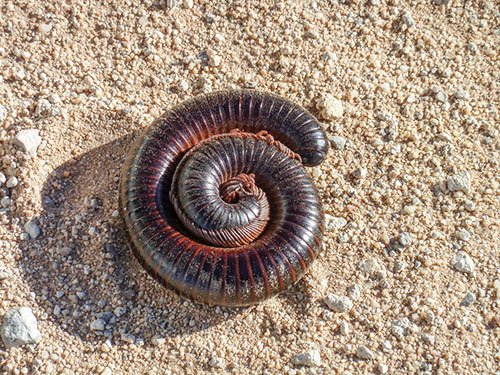Are you sure you want to free your goldfish in the local pond?
Giant goldfish taking over stormwater ponds may sound like the stuff of urban legend – or nightmares. But fish and other pets invading local ecosystems aren’t uncommon, says Biological Science Technology instructor Laurie Hunt.
The issue came to light last week, when the city of St. Albert announced plans to poison thousands of goldfish that have taken over a local pond and were threatening to invade the nearby Sturgeon River.
“People release their pet fish into the stormwater ponds and they think they’ll just die in the winter but they don’t. They can survive the winter and propagate,” says Hunt. “And they’re hard to get out.”
There’s a lot at stake if they don’t. Seemingly harmless house pets can upset nature’s balance. Native species can be crowded out and diseases can be introduced and spread. “There’s lots of examples of non-native species getting introduced unintentionally and having a very negative impact on the native biodiversity,” Hunt says.
We asked the instructor for a few more examples of pets gone wild – every one of them proof that certain animals are best kept out of the great outdoors.
 |
Goldfish and koi
The St. Albert goldfish are believed to have descended from house pets set free about 4 years ago. Hunt says goldfish and other pet fish have been a persistent problem in ponds around Alberta for decades.
Pet fish are enough of a problem that the provincial government has an education campaign about the dangers of releasing them.
|
 |
Rabbits
Domestic rabbits gone feral in Canmore are another problem. According to gocanmore.com, someone released about a dozen pet rabbits in the mid-1980s, and their descendants multiplied, well, like rabbits.
“They’ve been trying very hard to get rid of them,” says Hunt. A controversial trapping program started about 5 years ago reportedly reduced their numbers, but the town continues to spend $60,000 a year removing the rabbits, which attract predators to the community.
|
 |
Burmese pythons
These snakes were released in the Florida Everglades several decades ago and they’ve flourished, says Hunt.
“In Alberta's climate, we’re lucky that most of exotic reptiles that might be released don’t survive, but in the Everglades, they have pythons that are doing very well – they’re taking over.”
The snakes have decimated rabbits, foxes, raccoons, opossums and bobcats – in some cases cutting populations by 99%. Earlier this year, 25 hunters were paid by South Florida authorities to euthanize the snakes.
|
 |
Giant millipedes
These otherwise harmless creepy-crawlies can no longer be sold in pet stores because of concerns they’d get out into the wild and wreak havoc on crops.
|
 |
Bullfrogs
The large frogs were technically introduced as food, rather than pets, by people looking to raise them in British Columbia in the 1930s and ’40s.
“Bullfrogs are very invasive and they out-compete the native frogs,” says Hunt.
Now bullfrogs are considered an invasive species in the Lower Mainland and on Vancouver Island.
|